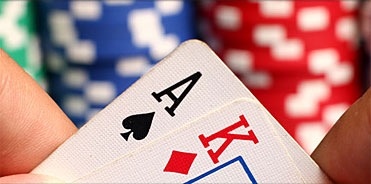One of the most successful forms of blackjack strategy is card counting. In fact, it’s such a successful strategy that there are several card counting strategies available on the Internet and in books.
The Hi-Lo card counting system, also referred to as the Plus/Minus blackjack card counting system is the most common and easy to learn and utilize blackjack strategy, it’s the strategy seen in the movie about the MIT students that rolled the casinos for hundreds of thousands of dollars in the blockbuster hit movie 21.
The system, which is known as a balanced card counting system was developed by Harvey Dubner and is a simplified version of Dr Edward Thorp’s card counting system known as the Ten Count. Dubner realized there was a need for a system that could be easily recalled and implemented at a blackjack table.
The following system is perfect for the recreational blackjack player or a player who intends to become a more serious force, but needs a place to begin building their blackjack strategy skillset.

Both intermediate and beginning blackjack players will be able to grasp this system fairly effortlessly, and then use it as a springboard to more intricate systems if they have the inclination.
To begin, every card is assessed a value of either -1, 0, or 1 · 2s 3s, 4s, 5s, and 6s count as 1 point, or +1 · 7s 8s and 9s are free cards; they have no value and count as 0. · 10, J, Q, K, A Count as -1
There are 20 cards in the deck that range from 2 to 6, and whenever a player see’s one of these cards, in his hand, the dealers up cards, or the other opponents cards, the player adds 1 point to the count.
The 12 cards from 7 to 9 are neutral cards, you can ignore these cards, to do not have a value and they do not change the count. The 20 high cards in the deck, the 10’s, jacks, queens, kings, and aces are counted as negative one. That being said, whenever one of these cards is dealt the count is reduced by one.
To begin learning this system, sit down with a deck of cards, and begin your count at zero, deal the cards out face up one by one keeping the count, if you kept an accurate tally, the count will be zero when the last card is dealt.
When the count is high, meaning more low cards have already been played, the player’s odds of winning are highest. When the amount of low cards in the deck is higher, the player’s odds of winning are lower, and a lower bet is the smarter move.